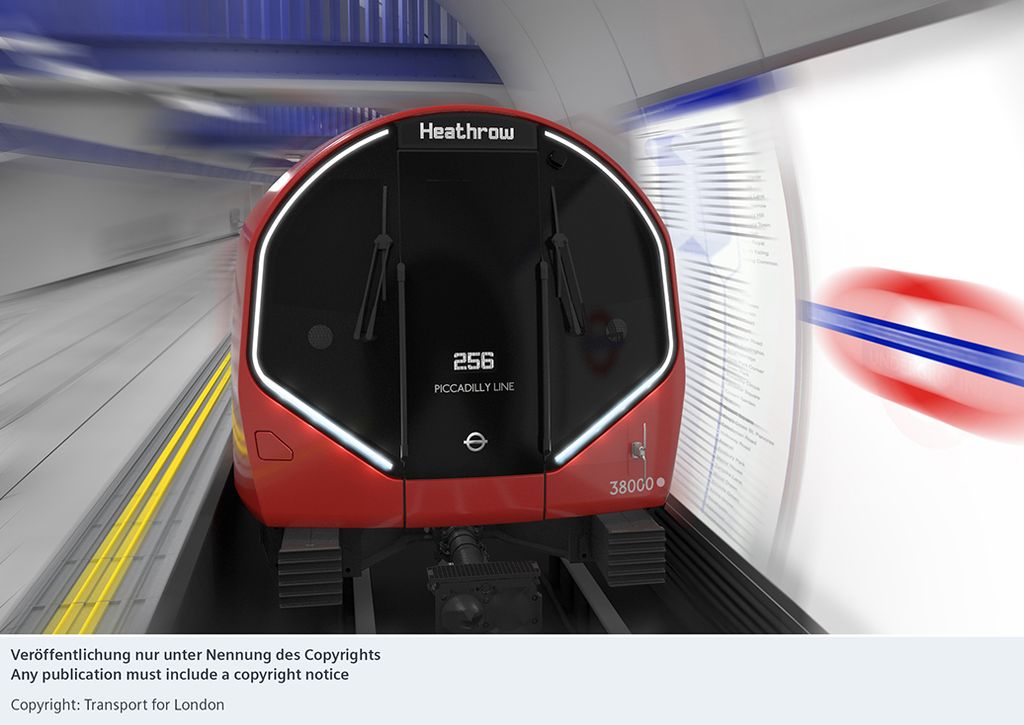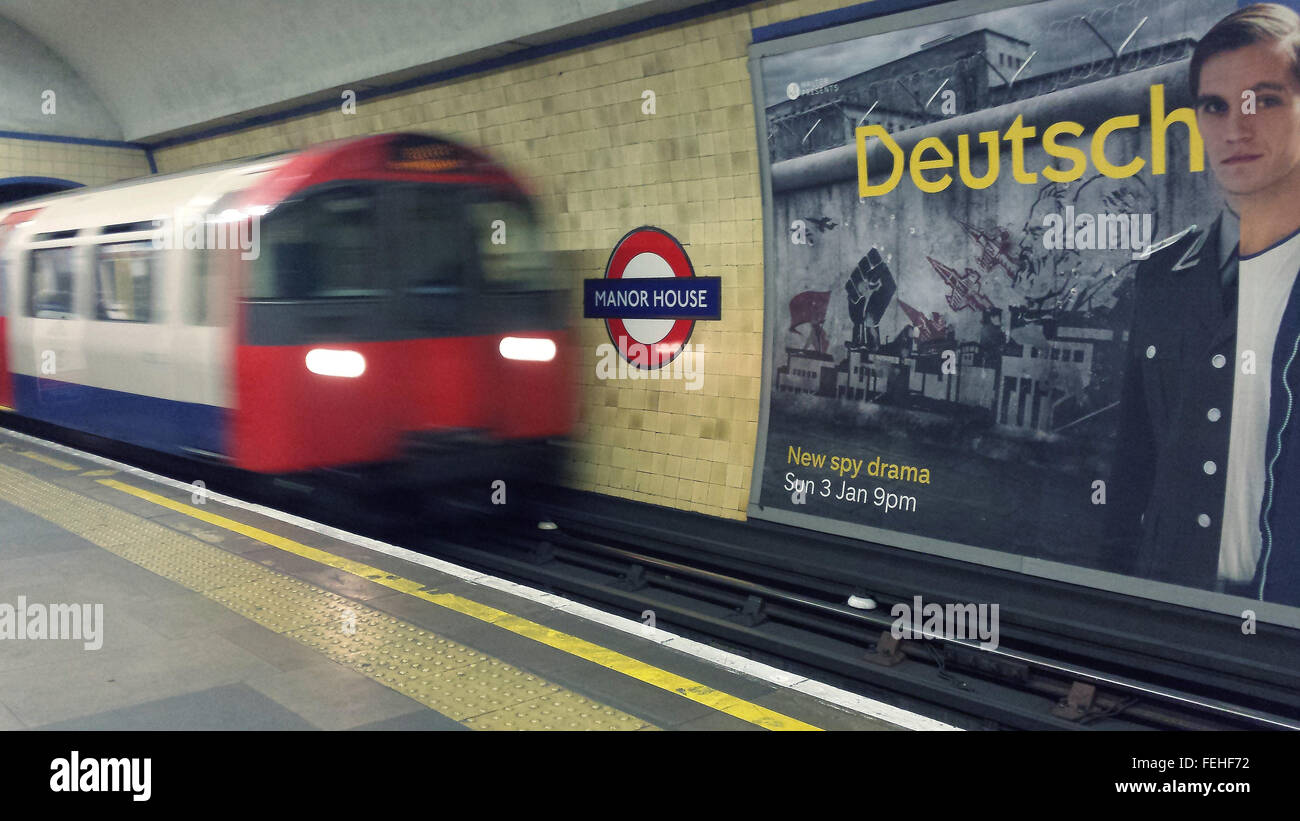
These differences were later patched up, however broad gauge was totally withdrawn from the railway in March 1869. Disagreements with GWR had forced the Metropolitan to switch to standard gauge in 1863 after GWR withdrew all its stock from the railway. The railway had initially been dual gauge, allowing for the use of GWR's signature broad gauge rolling stock and the more widely used standard gauge stock. Later in the decade other branches were opened to Swiss Cottage, South Kensington and Addison Road, Kensington (now known as Kensington Olympia). On 23 December 1865 the Metropolitan's eastern extension to Moorgate Street opened. By April 1865 the Metropolitan had taken over the service. Services were initially operated by GWR between Hammersmith and Farringdon Street. The Hammersmith and City Railway was opened on 13 June 1864 between Hammersmith and Paddington. Within a few months of opening it was carrying over 26,000 passengers a day. The Metropolitan Railway opened on 10 January 1863. Pearson died before the work was completed. Work finally began in February 1860, under the guidance of chief engineer John Fowler. And in 1859 it was Pearson who persuaded the City of London Corporation to help fund the scheme. Although he was never directly involved in the running of the Metropolitan Railway, he is widely credited as being one of the first true visionaries behind the concept of underground railways. He advocated plans for the demolition of the unhygienic slums which would be replaced by new accommodation for their inhabitants in the suburbs, with the new railway providing transportation to their places of work in the city centre. Pearson had supported the idea of an underground railway in London for several years. The fact that this project got under way at all was largely due to the lobbying of Charles Pearson, who was Solicitor to the City of London Corporation at the time. GWR also agreed to design special trains for the new subterranean railway.Ĭonstruction was delayed for several years due to a shortage of funds.


The Great Western Railway (GWR) gave financial backing to the project when it was agreed that a junction would be built linking the underground railway with their mainline terminus at Paddington. In 1854 an Act of Parliament was passed approving the construction of an underground railway between Paddington Station and Farringdon Street via King's Cross which was to be called the Metropolitan Railway. The idea of building an underground railway to link the City of London with the mainline terminals had first been proposed in the 1830s, but it was not until the 1850s that the idea was taken seriously as a solution to the traffic congestion problems. Traffic congestion in the city and the surrounding areas had increased significantly in this period, partly due to the need for rail travellers to complete their journeys into the city centre by road. At this point, only Fenchurch Street Station was located in the actual City of London. By 1854 six separate railway terminals had been built just outside the centre of London: London Bridge, Euston, Paddington, King's Cross, Bishopsgate and Waterloo. Railway construction in the United Kingdom began in the early 19th century. Documentary about the history of the London Underground.

Main article: History of the London Underground In 2007, over one billion passenger journeys were recorded. The Underground has 275 stations and approximately 400 km (250 miles) of track, making it the longest metro system in the world by route length, and one of the most served in terms of stations. Since 2003 LUL has been a wholly owned subsidiary of Transport for London (TfL), the statutory corporation responsible for most aspects of the transport system in Greater London, which is run by a board and a commissioner appointed by the Mayor of London. The underground network became a single entity when London Underground Limited (LUL) was formed by the UK government in 1985. The earlier lines of the present London Underground network, which were built by various private companies, became part of an integrated transport system (which excluded the main line railways) in 1933 with the creation of the London Passenger Transport Board (LPTB), more commonly known by its shortened name: "London Transport". It is usually referred to as the Underground or the Tube - the latter deriving from the shape of the system's deep-bore tunnels - although about 55% of the network is above ground. It was also the first underground railway to operate electric trains. It is both the world's oldest underground railway and the oldest rapid transit system. The London Underground is a metro system serving a large part of Greater London and neighbouring areas of Essex, Hertfordshire and Buckinghamshire in England. London Underground Victoria Line 2009 Stock Observations. London Underground Victoria Line 2009 Stock Observations


 0 kommentar(er)
0 kommentar(er)
